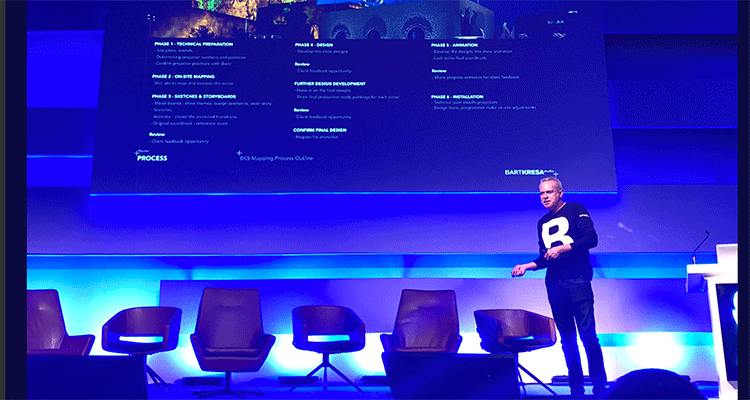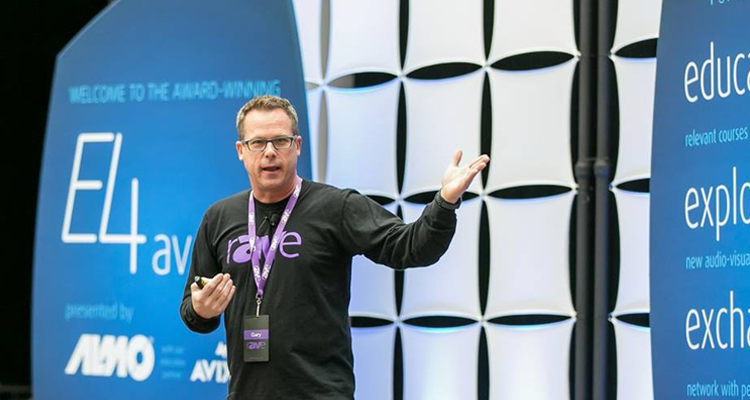3 Things You Should Take Away from the InfoComm16 Keynote
For the first time since I saw Brian Solis talk at Customer Engagement Technology World, I was excited about a keynote before a trade show. InfoComm hit a home run in my eyes getting Stephen Dubner, co-author of books like Freakonomics and Think Like a Freak (my personal favorite of his). Making things even more exciting, a couple industry friends were both being presented with the Young AV Professional Award before the speech. Given all this, I got there early and was at the front of the line.

Dubner did a great job of keeping the audience engaged and wove together stories about everything from artificial insemination of turkeys to the poor hand-washing habits of physicians to monkey prostitution. If you missed it, I’m sorry as it was quite entertaining.
However, despite the stories Dubner told, I couldn’t help overhearing a few folks say “I expected more” or “He never tied it back in to our industry”. Maybe it’s because I’m such a fan boy but I didn’t have any of those thoughts. I actually would have been disappointed if Dubner had tried to draw some concrete conclusions about an industry he admittedly knows little about. Dubner’s work has always been more of an inspiration to ponder as opposed to a directive and most of his studies and examples illustrate that even the experts get these things wrong all the time, let alone the novices.
Dubner gives us an invitation to break our traditional lines of thought and perhaps in doing so, find a new and exciting avenue for our businesses. With that, I’d like to offer up 3 things to take away from Dubner’s talk that you may or may not have already thought about.
Industries change, we need to as well.
Duh right? We all know this, but I think sometimes the embrace is a slow one and that can be dangerous. Take Dubner’s turkey story. Turkey farmer’s have bread their turkeys to have more breast meat, making them more valuable. As a side effect, the turkey’s anatomy is now such that they cannot breed naturally and now must all be artificially inseminated. If you are a turkey farmer you have a few choices.
Option 1: Breed turkeys with a normal sized breast and let them reproduce naturally. (Legacy Product, Existing Process)
Option 2: Breed turkeys with an enhanced breast and choose to artificially inseminate. (New Product, New Process).
Option 3: Breed turkeys with enhanced breasts and let them try to reproduce naturally with limited success. (New Product, Existing Process)
Option 3 is the worst choice. It is the one foot in and one foot out approach. Trying to compete in a new world but refusing to change your business practices to do it. I would liken this to selling IP based audio or video solutions without ever getting a proper education on configuring a network. You may have limited success, but long term the approach fails. One foot in, one foot out is a recipe for disaster.
The farmer who chooses option 1 and sticks to the old way can at least eek out a living, his turkeys can breed, although they are not worth as much. He may be a Luddite, but like the Samurai, there is some honor in embracing tradition. He may eventually fade, but at least he chose a path and stuck to it.
Obviously the best chance of success is option 2.
In my opinion, the challenge Dubner presents to us is to take a hard look at where the industry is going and make sure we are adapting to change on both sides and not just on the product side. Are we in with both feet?
Buying Behavior is Hard to Predict
To paraphrase Dubner, “The problem with futurists is that they are often wrong. Exactly 0% of economists predicted the Great Recession in 2007.” This is especially poignant in our industry given that we have various talks on future trends and whole pavilions dedicated to the concept. Dubner goes on to share that one of the reasons it’s hard to predict the future is that we are not always honest about what we even want. We will say one thing and then do another, what he coins as the difference between our “declared” and “revealed” preferences.
If you are trying to influence buying behavior, this makes things hard. Someone may say that if you develop a product with X,Y and Z features that they will buy it, but will they? They may say price is a key factor, but then still not buy when a discount is offered. How many times have you made concessions to win a project or customer and then they decided not to make a change after all?
As I see it, and as Dubner alludes to, part of the issue is we assume that we are dealing with “rational actors”. That our customers are being honest about their needs and make decisions rationally. This just isn’t the case, and if you want to read an awesome book on the subject, go get Predictably Irrational by Dan Arielly. His thesis is that the only thing we can predict with certainty is the irrational nature of our decision making process.
I have seen this time and again. I remember one time while working in residential AV we were renegotiating a contract for hundreds of homes with a national home builder. Our competitor was offering a product at a higher price and giving a small rebate based on volume. We were offering the exact same product at a price lower than the combined price and rebate offered the competitor. Yet we almost lost the contract. Why?
From a business perspective it was irrational to say the least, especially given that we were the incumbent and had a great relationship with them. I did some exploring and found out that it was the rebate. Even though the competitor’s combined price was higher, the purchasing manager’s bonus was weighted more toward collecting rebates than saving the department money. The higher price with the rebate benefited him personally even though it cost the company money in the long run.
So I did the predictably irrational thing in return and raised my price offering a slightly better rebate. The builder had to do more paperwork, track POs, and pay us more money than necessary, but that’s what it took to close the deal. It’s crazy but true.
In my opinion, the challenge Dubner presents to us in this case is not to lend too much credence to what our potential customers say they want. Don’t assume there is a rational reason they make the decisions that they do. Look at the things they buy now and the companies they do business with. Your observations and questions may just “reveal” their true preferences and be the key to starting a business relationship with them.
People don’t always use your product as intended.
Dubner wrapped up with a story that brought the house down, and I’m sure one that will be remembered by most of the attendees for a long time.
In short the story goes like this: An economist teaches monkeys to use small washers as currency to buy their favorite foods, but eventually the monkeys steal the washers and trade them for sex instead.
Now as funny as the story and the idea of “monkey prostitution” may be, I have to think there is a lesson buried in here, and I believe it is that products, like the washers, are not always used as intended.
Let me give you an AV example. I remember to talking to a video extender manufacturer one time about the genesis of one of their products. They made a video extender that included memory to store EDID information. Given that many systems utilizing digital signals were breaking down due to EDID not transmitting properly across distances, this made a ton of sense to store EDID locally. They found out however that many of their customers were using these extender units even when not needing to extend the video long distances, just to store the EDID they wanted. Their observation resulted in a new EDID emulator product that saved their customers both space and money.
This is why customer empathy is so important in product development and also in system design. I have long argued that one of the best ways to start designing a system is to walk the customers existing facility and sit in on one of their meetings to see how they utilize things currently.
It may be hard to predict behavior, but its easy to observe it. It may be hard to predict the future, but the best predictor of future behavior is past behavior. Dubner’s challenge here I believe is to add that all up, and you may just get some insight as to where you should be focusing your product development and business expansion efforts.
Thanks again to InfoComm for securing Stephen Dubner as a speaker and to Mr. Dubner himself for putting together an entertaining and thought provoking talk. Hopefully I have not overstepped in the conclusions and lessons I have drawn here, or in the challenges I believe were laid out for us as an industry. If you do happen to read this Mr. Dubner, I’d welcome your comments below or to the email listed in my profile as well. Of coures that invitation extends to the rest of the readers as well!





